13 Jan – 16 Apr 2023
The Willful Plot
-
Derya Akay
ArtistDerya Akay (Turkish, b. 1988) is an interdisciplinary artist who works, learns and gardens on the unceded territories of the Musqueam, Squamish and Tsleil-Waututh Nations. Akay plays with the tension between preservation and decay, control and chance, trial and error. Their process-based artistic strategies allow them to embrace the realities of time and transformation on the organic materials they work with. Akay poeticizes the act of cooking, using it as a metaphor for their studio practice. Akay received a BFA from Emily Carr University in 2010. Collective plant, garden and food-based projects include Garden Don’t Care and Looking at the Garden Fence. Recent exhibitions include Toronto Biennial of Art; The Wattis Institute, San Francisco; The Polygon Gallery, North Vancouver; Unit 17, Vancouver; and Vancouver Art Gallery.
Read More
-
Vivienne Bessette
ArtistVivienne Bessette (b. 1982) is a queer artist of mixed settler and Michif heritage (Red River Treaty 1). They are based on the stolen and unceded territories of the xʷməθkʷəy̓əm, Sḵwx̱wú7mesh and səlí̓lwətaʔɬ Nations. Bessette incorporates drawing, painting, woodworking, sculpting, dying, writing, fermenting and building relationships with plants into their practice. They work in and out of the studio, the garden and the kitchen, developing sustainable and alternative modes of food production and utilizing unconventional materials. The strength of entangled and interdependent community is at the stomach of Bessette’s process. Bessette holds a BFA from Simon Fraser University. They have been involved with multiple garden and food-based collectives, including Commons Garden at Sahalli Park Community Garden, Garden Don’t Care, Looking at the Garden Fence, and the project What artists bring to the table for the Art Gallery of Greater Victoria with Derya Akay and Kurtis Wilson. Bessette was a Food Coordinator for Slow Waves Small Projects on Mayne Island. They have been published in The Capilano Review (“Pattern of Pears,” 2020 and “Organize Your Building with the Support of the Vancouver Tenants Union with the Belvedere Residents,” 2018).
Read More
-
Gabi Dao
ArtistGabi Dao (Canadian, b. 1991) is an artist and organizer currently based in Rotterdam, The Netherlands. Dao’s research-based practice culminates in collage, sculpture, sound and moving image installations. They also generate olfactory experiences in both their installations and their small-batch perfume business, PPL’S PERFUME. Through non-linear conceptions of memory, time and truth, Dao confronts Western ocularcentrism and the rigid binarism of capitalism. Dao also engages with writing and community building in her work. Dao is currently an MFA candidate at the Piet Zwart Institute, Rotterdam, and received a BFA from Emily Carr University. Dao was shortlisted for the Sobey Art Award (2021) and received the Portfolio Prize Award for Emerging Artists (2016). She has exhibited in galleries and artist-run spaces across Canada, Asia and Europe, including solo exhibitions at grunt gallery and Spare Room, Vancouver; as well as group exhibitions at the Vincom Centre for Contemporary Art, Hà Nội, Vietnam; Centre Clark, Montreal; National Gallery of Canada, Ottawa; Kamias Triennale, Quezon City, Philippines; Nanaimo Art Gallery; Libby Leshgold Gallery at Emily Carr University, Vancouver; Burnaby Art Gallery; Vancouver Art Gallery; Audain Gallery at Simon Fraser University, Vancouver; Western Front, Vancouver; Artspeak, Vancouver; 221a, Vancouver.
Read More
-
Derek Jarman
ArtistDerek Jarman (English, 1942-1994) was an artist, filmmaker, gardener and activist who is considered a central figure of twentieth-century British culture. A renowned director, cinematographer and set designer, he is best known for his avant-garde art films. Many of his films explored the lives of gay and bisexual historical figures, including Caravaggio (1986) and Wittgenstein (1993), despite the dominant conservatism of the time. Collaboration was essential to Jarman’s practice. He worked with the Smiths, Pet Shop Boys and Bryan Ferry as an early maker of music videos, and helped launch the careers of Tilda Swinton and Sean Bean. After he was diagnosed with HIV in 1986, Jarman continued to elevate queer histories and experiences, giving a voice to the impact of the AIDS crisis on his community. The Slogan Paintings series appropriated words and phrases from media outlets and government policies, commenting on public fear and so-called “AIDS panic.” Around this time, he also began tending his seaside garden at Prospect Cottage, his home in Dungeness, Kent. Gardening was a source of healing and happiness throughout the duration of his illness before he died of AIDS-related complications in 1994. His Prospect Cottage garden still remains today as a tribute to his life and work. During his life, Jarman exhibited across England, including at Edward Totah Gallery, London; Institute of Contemporary Arts, London; and Whitworth Art Gallery, Manchester. His work has been widely exhibited posthumously, including a retrospective at the Irish Museum of Modern Art, Dublin. Jarman wrote several books, including the autobiographical Dancing Ledge (1984) and two volumes of memoirs, Modern Nature(1992) and At Your Own Risk (1992). Derek Jarman’s Garden, which documents the creation of his extraordinary garden at Dungeness was published in 1995.
Read More
-
Charmian Johnson
ArtistCharmian Johnson (Canadian, 1939-2020) was an artist and educator who lived and worked in Vancouver. She studied ceramics under Glenn Lewis, and developed a distinct style within the Leachian tradition having spent a number of years at Bernard Leach’s pottery studio in St. Ives where she catalogued and archived the Leach collection. Beginning in the 1970s, Johnson has been highly regarded across local and international ceramic communities. Throughout her lifetime, she developed a meticulous drawing practice that she kept largely to herself. Rendering botanical elements she encountered in her own garden as well as on her travels to Morocco, Turkey, Hawaii and France, Johnson developed her drawings over time, sometimes for months or even years. Johnson studied drawing, graphics and pottery at the University of British Columbia. She has had solo exhibitions at the Vancouver Art Gallery and UBC Fine Arts Gallery (now the Belkin Gallery). Johnson has been featured in group exhibitions across Canada, including the National Gallery of Canada, Ottawa; the UBC Museum of Anthropology, Vancouver; the Burnaby Art Gallery; the Art Gallery of Greater Victoria; the Glenbow Museum, Calgary; the Museum of Natural Sciences, Ottawa; Catriona Jeffries Gallery, Vancouver; and in the 2004 exhibition Thrown: Influences and Intentions of West Coast Ceramics at the Morris and Helen Belkin Art Gallery, which she co-curated.
Read More
-
Glenn Lewis
ArtistGlenn Lewis (Canadian, b. 1935) is a contemporary conceptual artist based in Vancouver. Lewis became a central figure within Vancouver’s prolific avant-garde art scene of the late 1960s. Initially trained in ceramics, his practice expanded to include photography, sculpture, performance and video, and is often grounded in collaborative projects or approaches. Lewis’s work questions the dualities of the social and the natural, the conventional and the mythical, as well as the static and the transient, often ironically. In 1967, Lewis was prominent in Intermedia, a loose collective of artists, musicians, dancers, architects, engineers and educators who came together to explore new forms of artistic expression and equipment, influenced in part by the ideas of Marshall McLuhan, Buckminster Fuller, the back-to-the-land movement, performance and conceptual art. Lewis was first inspired to take up performance art himself after attending workshops with choreographers and dancers Deborah Hay and Steve Paxton at the Vancouver Art Gallery in 1968, and the following year participating in a performance tour with his piece Canadian Pacific and Yvonne Rainer’s Rose Fractions. Lewis received a degree from the Vancouver School of Art in 1958 (now Emily Carr University) and later a teaching degree from the University of British Columbia. He went on to study ceramics under artist and potter Bernard Leach at St. Ives in Cornwall, England from 1961 to 1963. Upon returning to Vancouver, Lewis became involved in numerous artists’ collectives and artist-run centres, including Intermedia (1967) and the New Era Social Club (1968). In 1973, he co-founded the Western Front Society with Martin Bartlett, Mo van Nostrand, Kate Craig, Henry Greenhow, Eric Metcalfe, Michael Morris and Vincent Trasov. As an educator, arts administrator and arts programmer, Lewis has curated numerous exhibitions and programs, including the Performance Art Program at the Western Front (1977-79), the Exhibition Program at the Western Front (1986-87) and the Western Front Historical Exhibition at the Künstlerhaus Stuttgart, Germany (1983). Lewis has served on numerous boards and councils, including the Vancouver Art Gallery Board of Directors and the Western Front Board of Directors. His work has been exhibited extensively across Canada and abroad.
Read More
-
Mike MacDonald
ArtistMike MacDonald (Mi’kmaq, 1941-2006) was a self-taught new media artist and gardener who lived in Nova Scotia. He linked his love for nature, Indigenous knowledge and storytelling with technology in his video and photography installations. He once said that “each of [his] shots is like a commercial for nature.” One of MacDonald’s most renowned living projects began in the early 1990s when he would embark on yearly road trips across Canada, planting butterfly gardens along the way. These gardens are tactile living examples of his devotion to and admiration of the environment.
MacDonald’s work has been shown internationally in solo exhibitions at venues including Sacred Circle Art Gallery, Seattle; Winnipeg Art Gallery; and Vancouver Art Gallery. His work has been included in group exhibitions at the Canadian Cultural Centre, Paris; Fujinomina, Mt. Fuji; Kamloops Art Gallery; Heard Museum, Phoenix and Edmonton Art Gallery. His work was recently featured at Vtape, Toronto, in partnership with the 2022 imagineNATIVE Film + Media Arts Festival where he had previously been awarded the first Aboriginal Achievement Award for New Media in 2000.Read More
-
Rehab Nazzal
ArtistRehab Nazzal is a Palestinian-born (b. 1961) multidisciplinary artist, activist and educator based in Vancouver. Her work interrogates the effects of settler colonialism on people, land and non-human life in Palestine. Nazzal blends experimental, conceptual and documentary strategies in her video, photography, sound and installation works. Her process relies heavily on research, critical thinking and community. Nazzal’s community organizing work includes collaboration with various art collectives, activist groups and galleries in Toronto, London, ON, Vancouver and Ottawa. Nazzal is currently a postdoctoral fellow at Concordia University. Nazzal was an assistant professor at Dar Al-Kalima University in Bethlehem, Palestine for three years, where she also served as Chair of the Contemporary Art and Interior Design Programs. She has lectured at Simon Fraser University, Western University and Ottawa School of Art. She holds a PhD in Art and Visual Culture from the University of Western Ontario, an MFA from Ryerson University, a BFA from the University of Ottawa and a BA (Economics) from Damascus University. Nazzal’s work has been exhibited in Canada and internationally, including at the Prefix Institute of Contemporary Art, Toronto; CONTACT Photography Festival, Toronto; Karsh-Masson Gallery, Ottawa; The Spanish Institute of Art; Encounters Film Festival, UK; the 22nd Sydney Biennale, Australia; San Francisco Museum of Modern Art; Foresight Gallery, Amman, Jordan; and Khalil Sakakini Cultural Centre, Ramallah, Palestine. She was a resident at the 29e Symposium international d’art contemporain de Baie-Saint-Paul and AXENEO7 Gallery in Quebec. She is the recipient of the Social Justice Award from Ryerson University and the Edmund and Isobel Ryan Visual Arts Award in Photography from the University of Ottawa.
Read More
-
Dana Qaddah
ArtistDana Qaddah (b. 1996 Beirut, Lebanon) is an interdisciplinary artist and independent curator based on unceded Musqueam, Tsleil-Waututh and Squamish territory. With a practice which forefronts themes of Arab futurism and storytelling, Qaddah uses archives of personal and itinerant cultural knowledge in installation, sculpture, photography and video works, while reflecting on generational displacement and being abstracted from the destruction of one’s own sense of self and place. Qaddah holds a BFA from Emily Carr University, and has presented work in both solo and group exhibitions at Unit 17, Vancouver. Other solo shows were held at Massy Arts Society for Capture Photography Festival, Vancouver and Glass Corner at Libby Leshgold Gallery at Emily Carr University, Vancouver. Qaddah will be included in an upcoming group exhibition at Pendulum Gallery for Capture Photography Festival, Vancouver (2023). Notable residencies include Plug-In ICA’s Summer Institute II: BUSH Gallery, and a two-month production residency at VIVO Media Arts Centre. Recent curatorial projects include Upper Side of the Sky by Jawa El Khash hosted by Western Front, Vancouver, as part of Recollective: Vancouver Independent Archives Week and No Man’s Land by Razan Al Salah hosted by C Magazine.
Read More
-
Melanie O’Brian
CuratorMelanie O’Brian is Associate Director/Curator at the Belkin, and has been the gallery’s Acting Director/Curator 2022 to the present. Prior to joining the Belkin, O’Brian was Director/Curator of Simon Fraser University Art Galleries, including Audain, Teck and SFU Gallery, from 2012 to 2020. She was formerly Curator/Head of Programs at The Power Plant Contemporary Art Gallery in Toronto, Director/Curator at Artspeak in Vancouver and Assistant Curator at the Vancouver Art Gallery. O’Brian has taught at UBC, Emily Carr University and Simon Fraser University, and received her MA in Art History from the University of Chicago. She has organized exhibitions locally and internationally, edited numerous publications and written extensively for catalogues and magazines.
Read More
Opening reception: Thursday, 12 January from 6-8 pm
The Willful Plot brings together artists’ practices to expand the notion of the garden as a site of tension between wild and cultivated, temporal and perpetual, public and private, sovereign and colonized. Here, the garden is considered by the artists not only as a delineated patch of earth, but as a story and a will to drive that story to complicate the way in which cultures and individuals see themselves in relation to ecology, sociality, belief and possibility. It is an opportunity to look at human relationships with land, flora, fauna and their interrelatedness. In its willfulness, the resistance garden is a counter-site, a heterotopia for alternative cultivation and potential transformation. Artists include Derya Akay and Vivienne Bessette, Gabi Dao, Derek Jarman, Charmian Johnson, Glenn Lewis, Mike MacDonald, Rehab Nazzal and Dana Qaddah.
The complexities of resistance and “…willfulness as audacity, willfulness as standing against, willfulness as creativity” (borrowing from scholar Sara Ahmed’s thinking in Willful Subjects) are articulated through works that use the garden as a site of cultural defiance and reclamation. From Mike MacDonald’s quiet technological focus on threatened traditional medicines as part of the endangered cultural practices of Indigenous peoples to Derek Jarman’s film shot in and around his visionary garden that was created in the face of his own mortality, these works activate possibility in the face of loss.
Countering notions of the garden as a site of nostalgia, Gabi Dao’s film and collage work explores the garden as reparative, a site of decomposition and recomposition that can support and regenerate history. Rehab Nazzal’s photography and film give agency to the wild plants that grow through ruined Palestinian villages and connect people to the land, even as parks and gardens are created as political claims. Dana Qaddah’s photographic focus on a Beirut rooftop is a site of social and vegetal cultivation for specific bodies that would otherwise have limits on their gathering.
The politics of communality is embedded in Derya Akay and Vivienne Bessette’s relational work with gardens as part of a larger resistance to development, outsourcing, individuation, speed and as a site to better entangle human and all other life. Gardens create links across time and cultures that connect the human desire to make sense of the earthly in relation to the cosmos. Over five decades, Glenn Lewis has photographed and created gardens in an investigation of paradisial symbolism. The symbolic stages of the garden, an allegory of the cycles of life (and death), cannot be untangled from the climate crisis. Charmian Johnson’s careful study of plant life through drawing offers another space of time in line with her subjects. If the garden is a site and a practice analogous to the studio, it exists within and beyond the logics of human time, holding its own agency, yielding non-linear narratives that give and take, fruit and compost, persist and disappear.
Download the handout for The Willful Plot
The Willful Plot is curated by Melanie O’Brian and made possible with the generous support of the Canada Council for the Arts, the Province of British Columbia through the BC Arts Council and our Belkin Curator’s Forum members. The Willful Plot is part of the 2023 Capture Photography Festival Selected Exhibition Program.
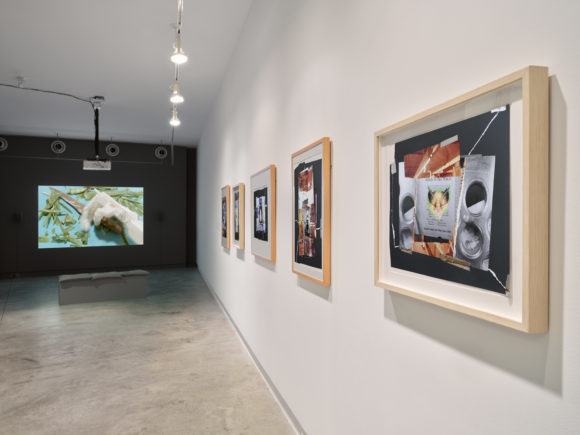
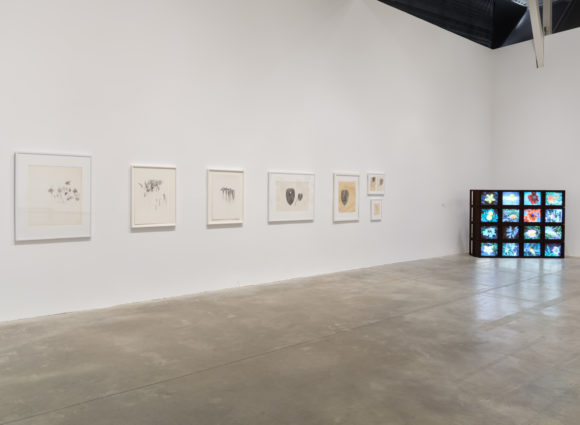
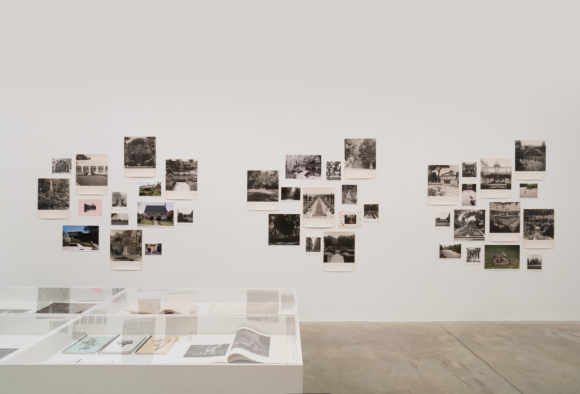
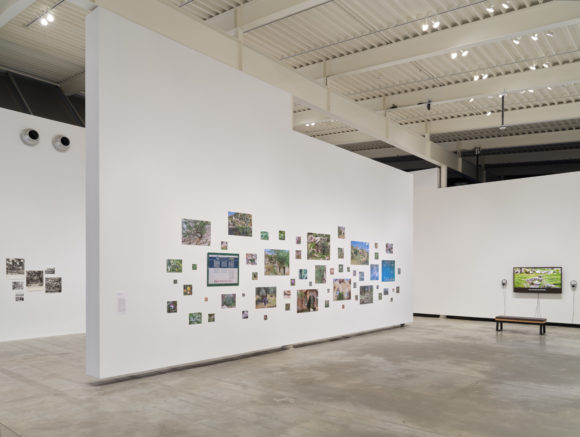
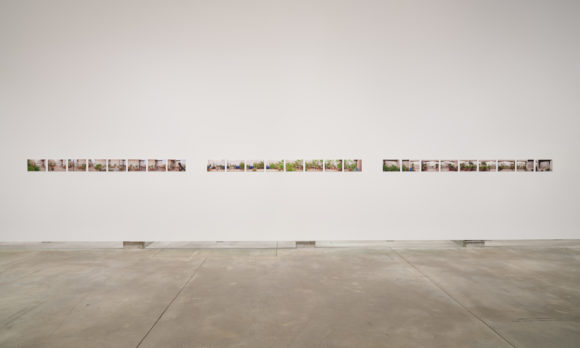
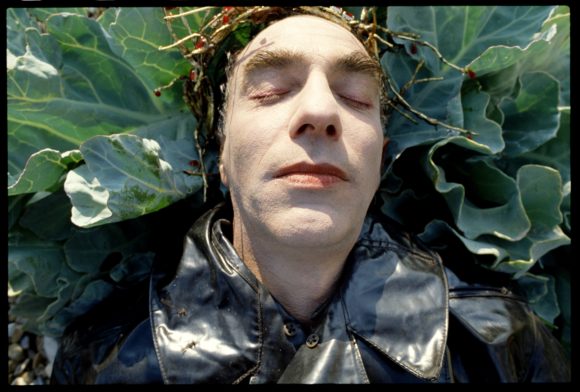
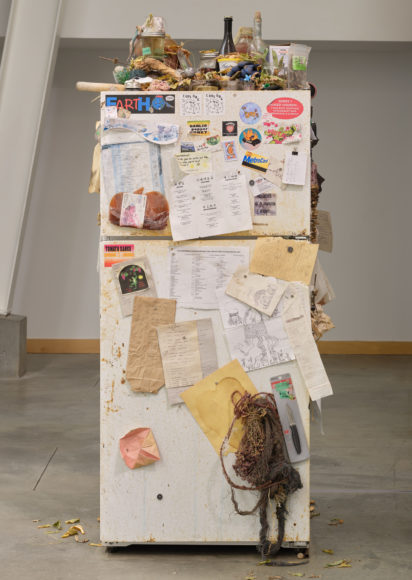
Image (above): Gabi Dao, The Protagonists (still), 2018. Courtesy of the artist and VIVO Media Arts Centre
-
Derya Akay
ArtistDerya Akay (Turkish, b. 1988) is an interdisciplinary artist who works, learns and gardens on the unceded territories of the Musqueam, Squamish and Tsleil-Waututh Nations. Akay plays with the tension between preservation and decay, control and chance, trial and error. Their process-based artistic strategies allow them to embrace the realities of time and transformation on the organic materials they work with. Akay poeticizes the act of cooking, using it as a metaphor for their studio practice. Akay received a BFA from Emily Carr University in 2010. Collective plant, garden and food-based projects include Garden Don’t Care and Looking at the Garden Fence. Recent exhibitions include Toronto Biennial of Art; The Wattis Institute, San Francisco; The Polygon Gallery, North Vancouver; Unit 17, Vancouver; and Vancouver Art Gallery.
Read More
-
Vivienne Bessette
ArtistVivienne Bessette (b. 1982) is a queer artist of mixed settler and Michif heritage (Red River Treaty 1). They are based on the stolen and unceded territories of the xʷməθkʷəy̓əm, Sḵwx̱wú7mesh and səlí̓lwətaʔɬ Nations. Bessette incorporates drawing, painting, woodworking, sculpting, dying, writing, fermenting and building relationships with plants into their practice. They work in and out of the studio, the garden and the kitchen, developing sustainable and alternative modes of food production and utilizing unconventional materials. The strength of entangled and interdependent community is at the stomach of Bessette’s process. Bessette holds a BFA from Simon Fraser University. They have been involved with multiple garden and food-based collectives, including Commons Garden at Sahalli Park Community Garden, Garden Don’t Care, Looking at the Garden Fence, and the project What artists bring to the table for the Art Gallery of Greater Victoria with Derya Akay and Kurtis Wilson. Bessette was a Food Coordinator for Slow Waves Small Projects on Mayne Island. They have been published in The Capilano Review (“Pattern of Pears,” 2020 and “Organize Your Building with the Support of the Vancouver Tenants Union with the Belvedere Residents,” 2018).
Read More
-
Gabi Dao
ArtistGabi Dao (Canadian, b. 1991) is an artist and organizer currently based in Rotterdam, The Netherlands. Dao’s research-based practice culminates in collage, sculpture, sound and moving image installations. They also generate olfactory experiences in both their installations and their small-batch perfume business, PPL’S PERFUME. Through non-linear conceptions of memory, time and truth, Dao confronts Western ocularcentrism and the rigid binarism of capitalism. Dao also engages with writing and community building in her work. Dao is currently an MFA candidate at the Piet Zwart Institute, Rotterdam, and received a BFA from Emily Carr University. Dao was shortlisted for the Sobey Art Award (2021) and received the Portfolio Prize Award for Emerging Artists (2016). She has exhibited in galleries and artist-run spaces across Canada, Asia and Europe, including solo exhibitions at grunt gallery and Spare Room, Vancouver; as well as group exhibitions at the Vincom Centre for Contemporary Art, Hà Nội, Vietnam; Centre Clark, Montreal; National Gallery of Canada, Ottawa; Kamias Triennale, Quezon City, Philippines; Nanaimo Art Gallery; Libby Leshgold Gallery at Emily Carr University, Vancouver; Burnaby Art Gallery; Vancouver Art Gallery; Audain Gallery at Simon Fraser University, Vancouver; Western Front, Vancouver; Artspeak, Vancouver; 221a, Vancouver.
Read More
-
Derek Jarman
ArtistDerek Jarman (English, 1942-1994) was an artist, filmmaker, gardener and activist who is considered a central figure of twentieth-century British culture. A renowned director, cinematographer and set designer, he is best known for his avant-garde art films. Many of his films explored the lives of gay and bisexual historical figures, including Caravaggio (1986) and Wittgenstein (1993), despite the dominant conservatism of the time. Collaboration was essential to Jarman’s practice. He worked with the Smiths, Pet Shop Boys and Bryan Ferry as an early maker of music videos, and helped launch the careers of Tilda Swinton and Sean Bean. After he was diagnosed with HIV in 1986, Jarman continued to elevate queer histories and experiences, giving a voice to the impact of the AIDS crisis on his community. The Slogan Paintings series appropriated words and phrases from media outlets and government policies, commenting on public fear and so-called “AIDS panic.” Around this time, he also began tending his seaside garden at Prospect Cottage, his home in Dungeness, Kent. Gardening was a source of healing and happiness throughout the duration of his illness before he died of AIDS-related complications in 1994. His Prospect Cottage garden still remains today as a tribute to his life and work. During his life, Jarman exhibited across England, including at Edward Totah Gallery, London; Institute of Contemporary Arts, London; and Whitworth Art Gallery, Manchester. His work has been widely exhibited posthumously, including a retrospective at the Irish Museum of Modern Art, Dublin. Jarman wrote several books, including the autobiographical Dancing Ledge (1984) and two volumes of memoirs, Modern Nature(1992) and At Your Own Risk (1992). Derek Jarman’s Garden, which documents the creation of his extraordinary garden at Dungeness was published in 1995.
Read More
-
Charmian Johnson
ArtistCharmian Johnson (Canadian, 1939-2020) was an artist and educator who lived and worked in Vancouver. She studied ceramics under Glenn Lewis, and developed a distinct style within the Leachian tradition having spent a number of years at Bernard Leach’s pottery studio in St. Ives where she catalogued and archived the Leach collection. Beginning in the 1970s, Johnson has been highly regarded across local and international ceramic communities. Throughout her lifetime, she developed a meticulous drawing practice that she kept largely to herself. Rendering botanical elements she encountered in her own garden as well as on her travels to Morocco, Turkey, Hawaii and France, Johnson developed her drawings over time, sometimes for months or even years. Johnson studied drawing, graphics and pottery at the University of British Columbia. She has had solo exhibitions at the Vancouver Art Gallery and UBC Fine Arts Gallery (now the Belkin Gallery). Johnson has been featured in group exhibitions across Canada, including the National Gallery of Canada, Ottawa; the UBC Museum of Anthropology, Vancouver; the Burnaby Art Gallery; the Art Gallery of Greater Victoria; the Glenbow Museum, Calgary; the Museum of Natural Sciences, Ottawa; Catriona Jeffries Gallery, Vancouver; and in the 2004 exhibition Thrown: Influences and Intentions of West Coast Ceramics at the Morris and Helen Belkin Art Gallery, which she co-curated.
Read More
-
Glenn Lewis
ArtistGlenn Lewis (Canadian, b. 1935) is a contemporary conceptual artist based in Vancouver. Lewis became a central figure within Vancouver’s prolific avant-garde art scene of the late 1960s. Initially trained in ceramics, his practice expanded to include photography, sculpture, performance and video, and is often grounded in collaborative projects or approaches. Lewis’s work questions the dualities of the social and the natural, the conventional and the mythical, as well as the static and the transient, often ironically. In 1967, Lewis was prominent in Intermedia, a loose collective of artists, musicians, dancers, architects, engineers and educators who came together to explore new forms of artistic expression and equipment, influenced in part by the ideas of Marshall McLuhan, Buckminster Fuller, the back-to-the-land movement, performance and conceptual art. Lewis was first inspired to take up performance art himself after attending workshops with choreographers and dancers Deborah Hay and Steve Paxton at the Vancouver Art Gallery in 1968, and the following year participating in a performance tour with his piece Canadian Pacific and Yvonne Rainer’s Rose Fractions. Lewis received a degree from the Vancouver School of Art in 1958 (now Emily Carr University) and later a teaching degree from the University of British Columbia. He went on to study ceramics under artist and potter Bernard Leach at St. Ives in Cornwall, England from 1961 to 1963. Upon returning to Vancouver, Lewis became involved in numerous artists’ collectives and artist-run centres, including Intermedia (1967) and the New Era Social Club (1968). In 1973, he co-founded the Western Front Society with Martin Bartlett, Mo van Nostrand, Kate Craig, Henry Greenhow, Eric Metcalfe, Michael Morris and Vincent Trasov. As an educator, arts administrator and arts programmer, Lewis has curated numerous exhibitions and programs, including the Performance Art Program at the Western Front (1977-79), the Exhibition Program at the Western Front (1986-87) and the Western Front Historical Exhibition at the Künstlerhaus Stuttgart, Germany (1983). Lewis has served on numerous boards and councils, including the Vancouver Art Gallery Board of Directors and the Western Front Board of Directors. His work has been exhibited extensively across Canada and abroad.
Read More
-
Mike MacDonald
ArtistMike MacDonald (Mi’kmaq, 1941-2006) was a self-taught new media artist and gardener who lived in Nova Scotia. He linked his love for nature, Indigenous knowledge and storytelling with technology in his video and photography installations. He once said that “each of [his] shots is like a commercial for nature.” One of MacDonald’s most renowned living projects began in the early 1990s when he would embark on yearly road trips across Canada, planting butterfly gardens along the way. These gardens are tactile living examples of his devotion to and admiration of the environment.
MacDonald’s work has been shown internationally in solo exhibitions at venues including Sacred Circle Art Gallery, Seattle; Winnipeg Art Gallery; and Vancouver Art Gallery. His work has been included in group exhibitions at the Canadian Cultural Centre, Paris; Fujinomina, Mt. Fuji; Kamloops Art Gallery; Heard Museum, Phoenix and Edmonton Art Gallery. His work was recently featured at Vtape, Toronto, in partnership with the 2022 imagineNATIVE Film + Media Arts Festival where he had previously been awarded the first Aboriginal Achievement Award for New Media in 2000.Read More
-
Rehab Nazzal
ArtistRehab Nazzal is a Palestinian-born (b. 1961) multidisciplinary artist, activist and educator based in Vancouver. Her work interrogates the effects of settler colonialism on people, land and non-human life in Palestine. Nazzal blends experimental, conceptual and documentary strategies in her video, photography, sound and installation works. Her process relies heavily on research, critical thinking and community. Nazzal’s community organizing work includes collaboration with various art collectives, activist groups and galleries in Toronto, London, ON, Vancouver and Ottawa. Nazzal is currently a postdoctoral fellow at Concordia University. Nazzal was an assistant professor at Dar Al-Kalima University in Bethlehem, Palestine for three years, where she also served as Chair of the Contemporary Art and Interior Design Programs. She has lectured at Simon Fraser University, Western University and Ottawa School of Art. She holds a PhD in Art and Visual Culture from the University of Western Ontario, an MFA from Ryerson University, a BFA from the University of Ottawa and a BA (Economics) from Damascus University. Nazzal’s work has been exhibited in Canada and internationally, including at the Prefix Institute of Contemporary Art, Toronto; CONTACT Photography Festival, Toronto; Karsh-Masson Gallery, Ottawa; The Spanish Institute of Art; Encounters Film Festival, UK; the 22nd Sydney Biennale, Australia; San Francisco Museum of Modern Art; Foresight Gallery, Amman, Jordan; and Khalil Sakakini Cultural Centre, Ramallah, Palestine. She was a resident at the 29e Symposium international d’art contemporain de Baie-Saint-Paul and AXENEO7 Gallery in Quebec. She is the recipient of the Social Justice Award from Ryerson University and the Edmund and Isobel Ryan Visual Arts Award in Photography from the University of Ottawa.
Read More
-
Dana Qaddah
ArtistDana Qaddah (b. 1996 Beirut, Lebanon) is an interdisciplinary artist and independent curator based on unceded Musqueam, Tsleil-Waututh and Squamish territory. With a practice which forefronts themes of Arab futurism and storytelling, Qaddah uses archives of personal and itinerant cultural knowledge in installation, sculpture, photography and video works, while reflecting on generational displacement and being abstracted from the destruction of one’s own sense of self and place. Qaddah holds a BFA from Emily Carr University, and has presented work in both solo and group exhibitions at Unit 17, Vancouver. Other solo shows were held at Massy Arts Society for Capture Photography Festival, Vancouver and Glass Corner at Libby Leshgold Gallery at Emily Carr University, Vancouver. Qaddah will be included in an upcoming group exhibition at Pendulum Gallery for Capture Photography Festival, Vancouver (2023). Notable residencies include Plug-In ICA’s Summer Institute II: BUSH Gallery, and a two-month production residency at VIVO Media Arts Centre. Recent curatorial projects include Upper Side of the Sky by Jawa El Khash hosted by Western Front, Vancouver, as part of Recollective: Vancouver Independent Archives Week and No Man’s Land by Razan Al Salah hosted by C Magazine.
Read More
-
Melanie O’Brian
CuratorMelanie O’Brian is Associate Director/Curator at the Belkin, and has been the gallery’s Acting Director/Curator 2022 to the present. Prior to joining the Belkin, O’Brian was Director/Curator of Simon Fraser University Art Galleries, including Audain, Teck and SFU Gallery, from 2012 to 2020. She was formerly Curator/Head of Programs at The Power Plant Contemporary Art Gallery in Toronto, Director/Curator at Artspeak in Vancouver and Assistant Curator at the Vancouver Art Gallery. O’Brian has taught at UBC, Emily Carr University and Simon Fraser University, and received her MA in Art History from the University of Chicago. She has organized exhibitions locally and internationally, edited numerous publications and written extensively for catalogues and magazines.
Read More
Related
-
Event
Wednesday 29 Mar 2023 at 1 pm
Lecture Series: What a seed does; or, tending to paradise, however you see it
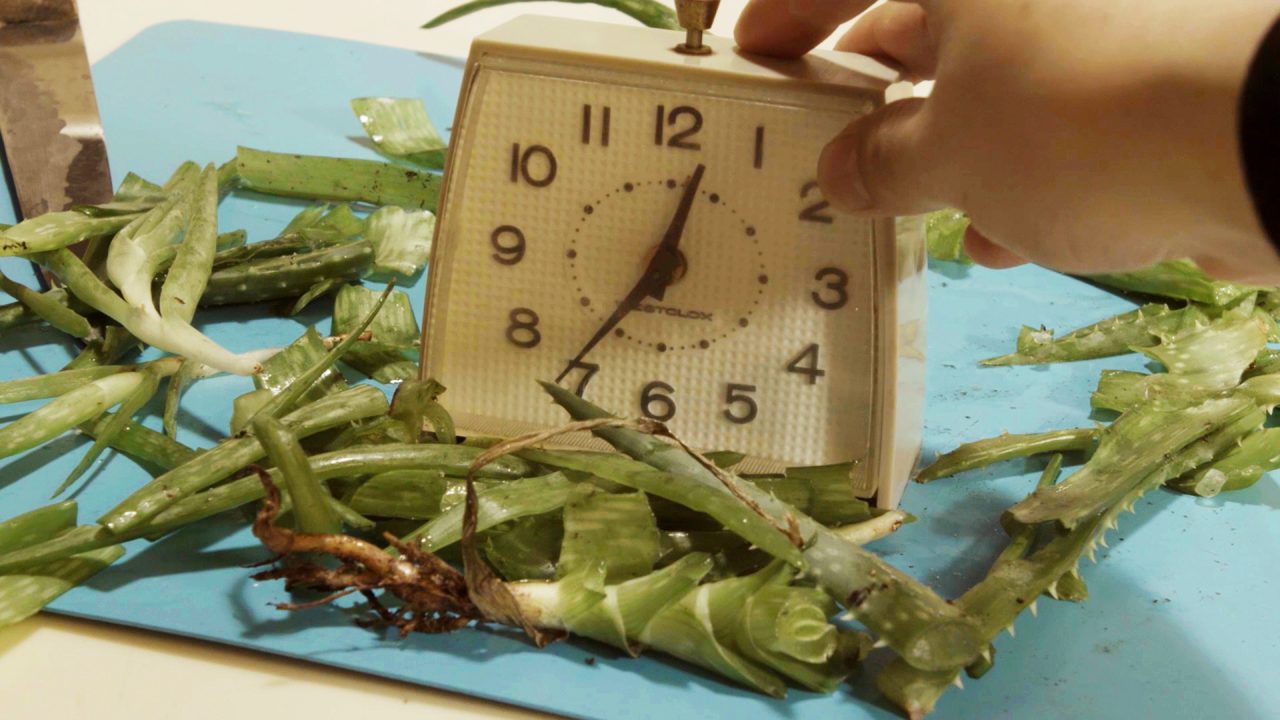
Join us for a series of lectures at the Belkin. We invite Jane Wolff, Desirée Valaderes and Sara Jacobs to address The Willful Plot.
[more] -
Event
Sunday, 5 February 2023 at 2 PM
Tea with Glenn Lewis
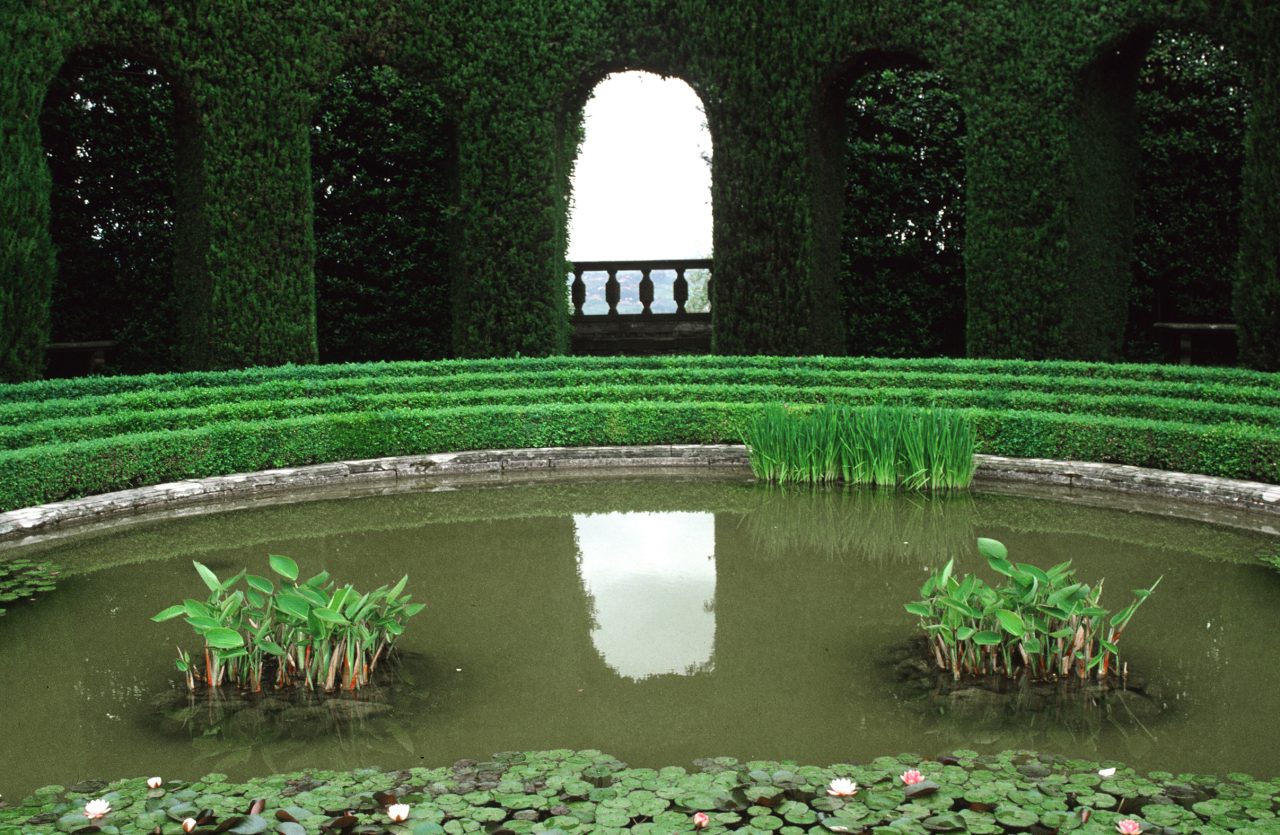
Join Glenn Lewis for a discussion of his work in The Willful Plot along with curator Melanie O'Brian. Over five decades, Glenn Lewis has photographed and created gardens in an investigation of paradisial symbolism.
[more] -
Event
Wednesday, 12 Apr 2023 at 2 pm
Concert at the Belkin: The Willful Plot
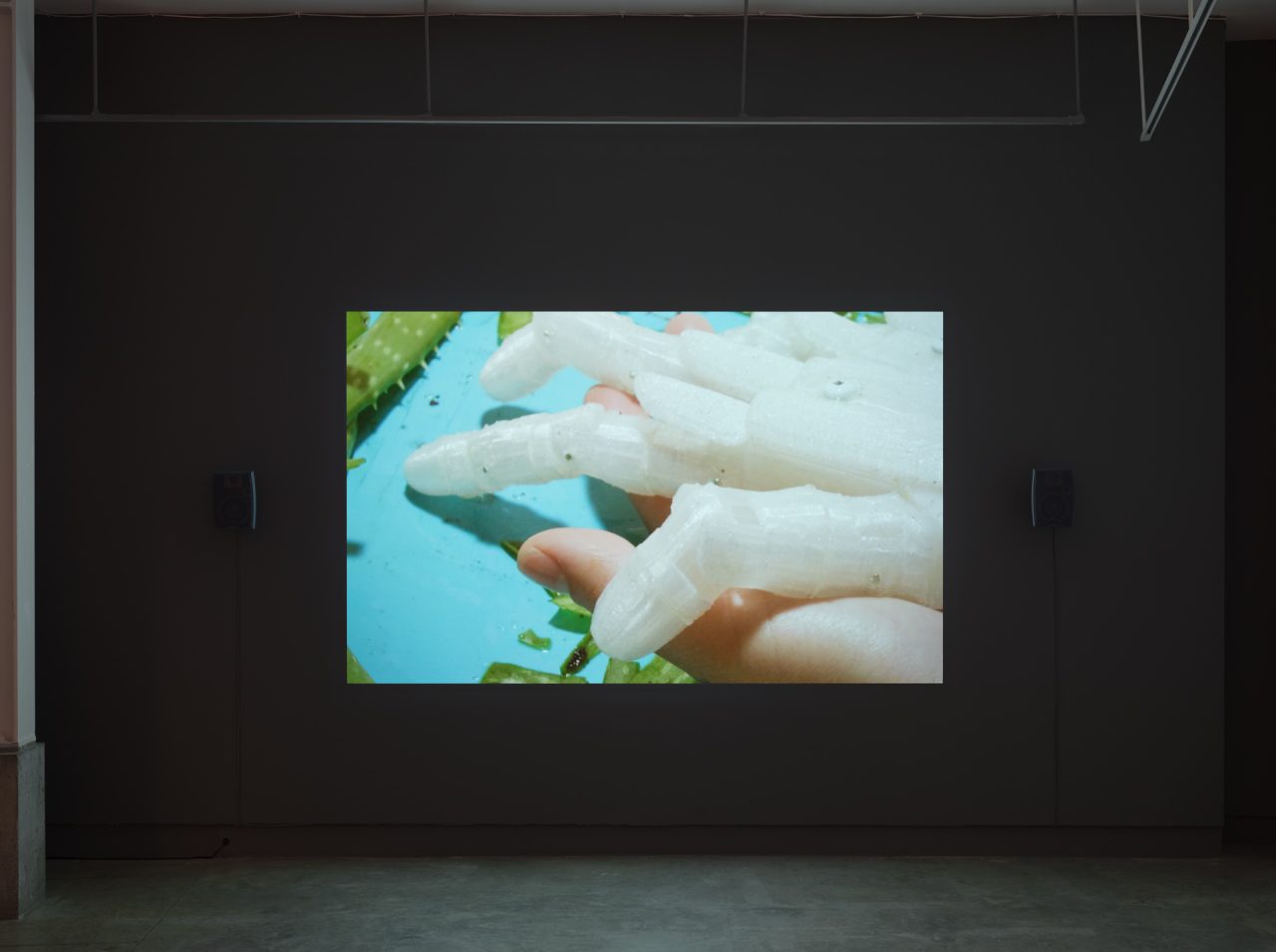
Join us for a concert by the UBC Contemporary Players directed by Paolo Bortolussi and teaching assistant Ramsey Sadaka in a program that celebrates the Belkin’s current exhibition The Willful Plot.
[more] -
News
15 Dec 2022
Reading Room: The Willful Plot
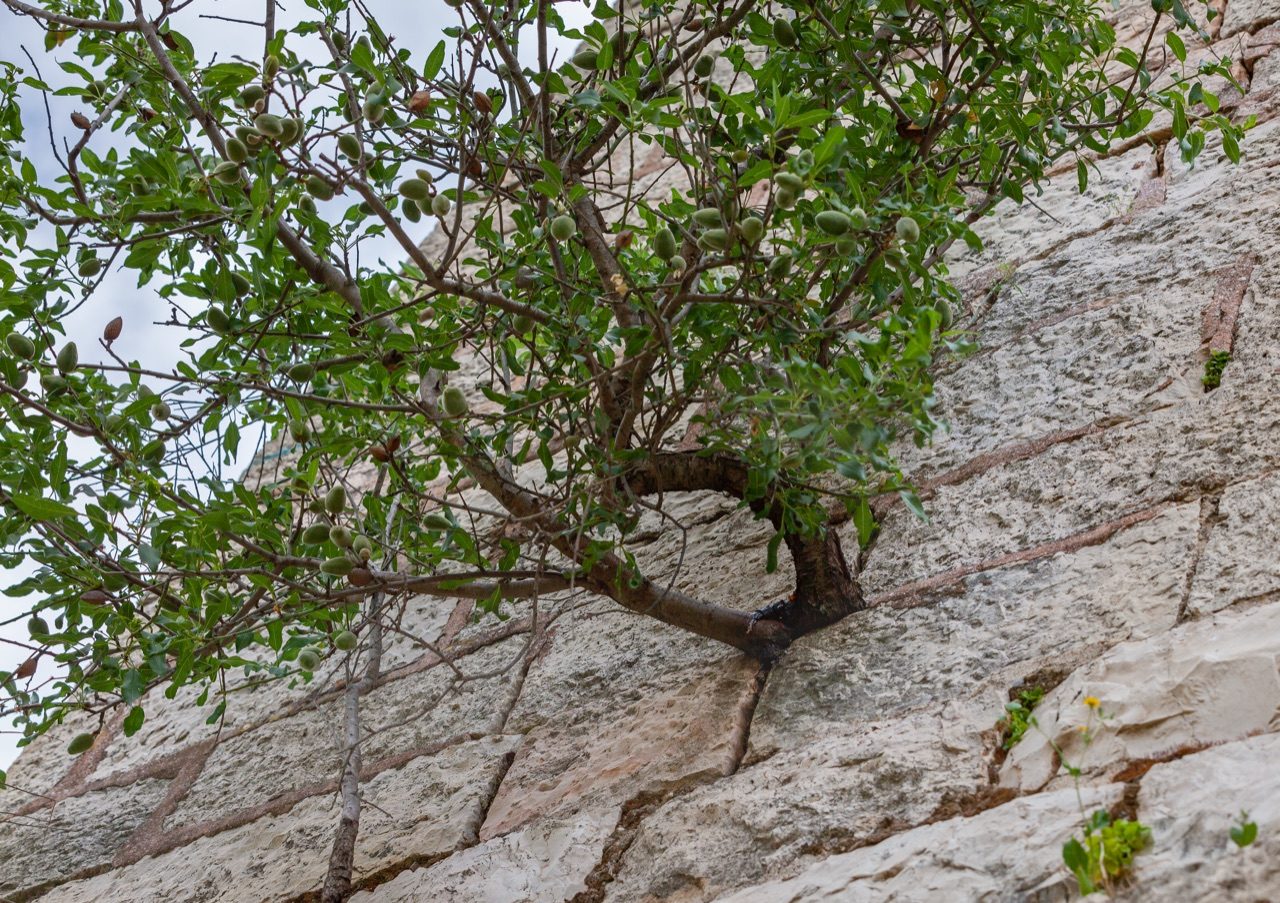
The Willful Plot brings together artists’ practices to expand the notion of the garden as a site of tension between wild and cultivated, temporal and perpetual, public and private, sovereign and colonized. This online Reading Room includes texts expanding on different notions of the garden and more-than-human relationships, as well as the political implications of thinking willfully, with and alongside.
[more] -
News
20 Jan 2023
Works from the Collection: Charmian Johnson
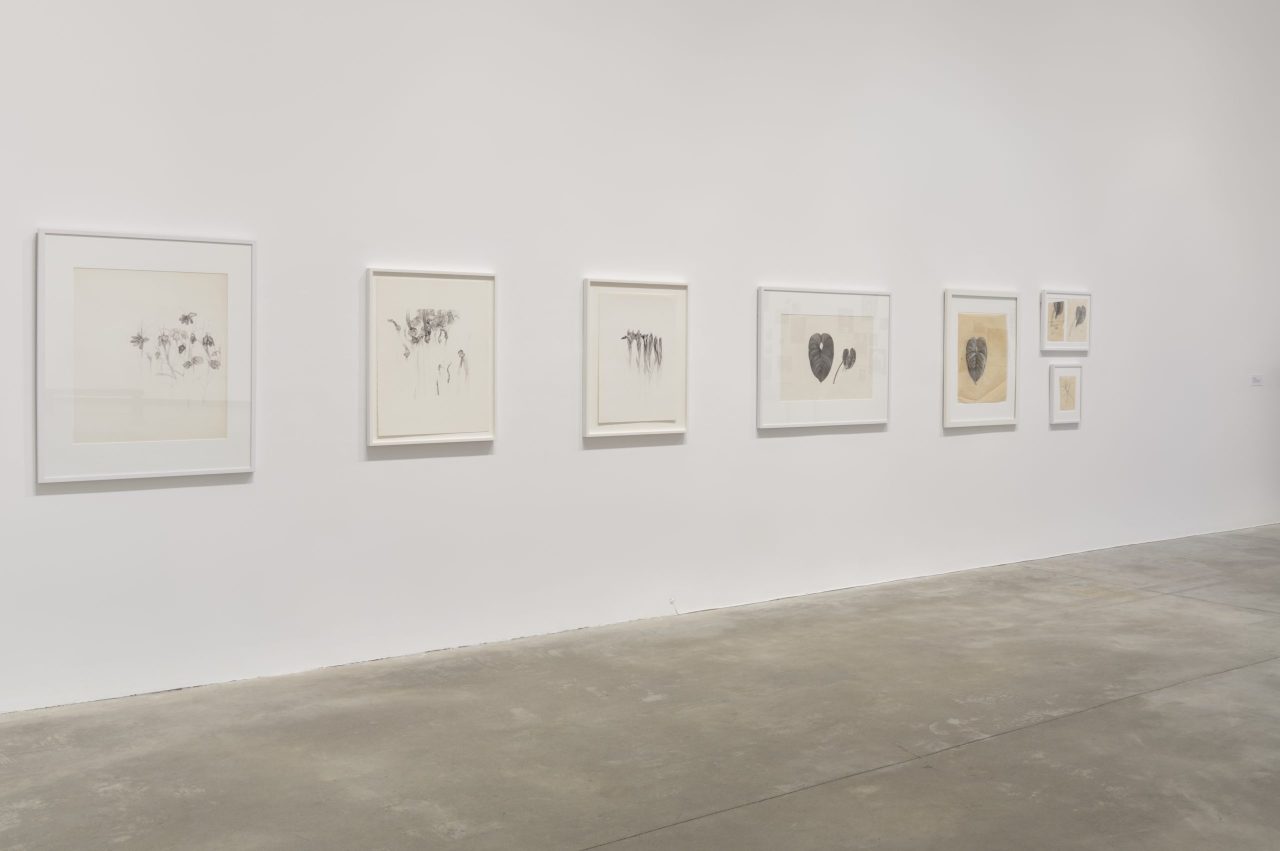
In this release of Works from the Collection, Jay Pahre considers work by Charmian Johnson in The Willful Plot exhibition.
[more] -
Event
Sunday 19 Feb 2023 at 11:30 am and 2 pm
Kids Take Over UBC 2023: The Weird and Wonderful – Gardens and Tie-Dye!

In conjunction with Kids Take Over UBC 2023, join us on Sunday, 19 February 2023 for this one-hour activity that includes a mini-tour of our exhibition, The Willful Plot (drawings, photographs and a fridge filled with surprising things...) that expand our ideas about gardens:wild and cultivated, vegetable and ornamental, amazingly detailed and fragrantly smelly; and a tie-dyeing workshop using dyes made from natural plant materials and common vegetable scraps.
[more] -
Event
Jan-Apr 2023
Sound Plots: The Willful Plot

As The Willful Plot invites us to consider sites of tension through an expanded notion of the garden, Sound Plots considers these intersections of site, human and nonhuman ecologies through sound.
[more] -
Event
Sunday 19 Mar 2023 at 1 PM
Outdoor Walk: The Backyard

In conjunction with The Willful Plot, join us for an outdoor walk that considers the UBC Vancouver campus from the perspective of the backyard.
[more] -
Event
Monday, 13 Mar 2023 from noon to 2 pm
Botanical Drawing Workshop: The Willful Plot
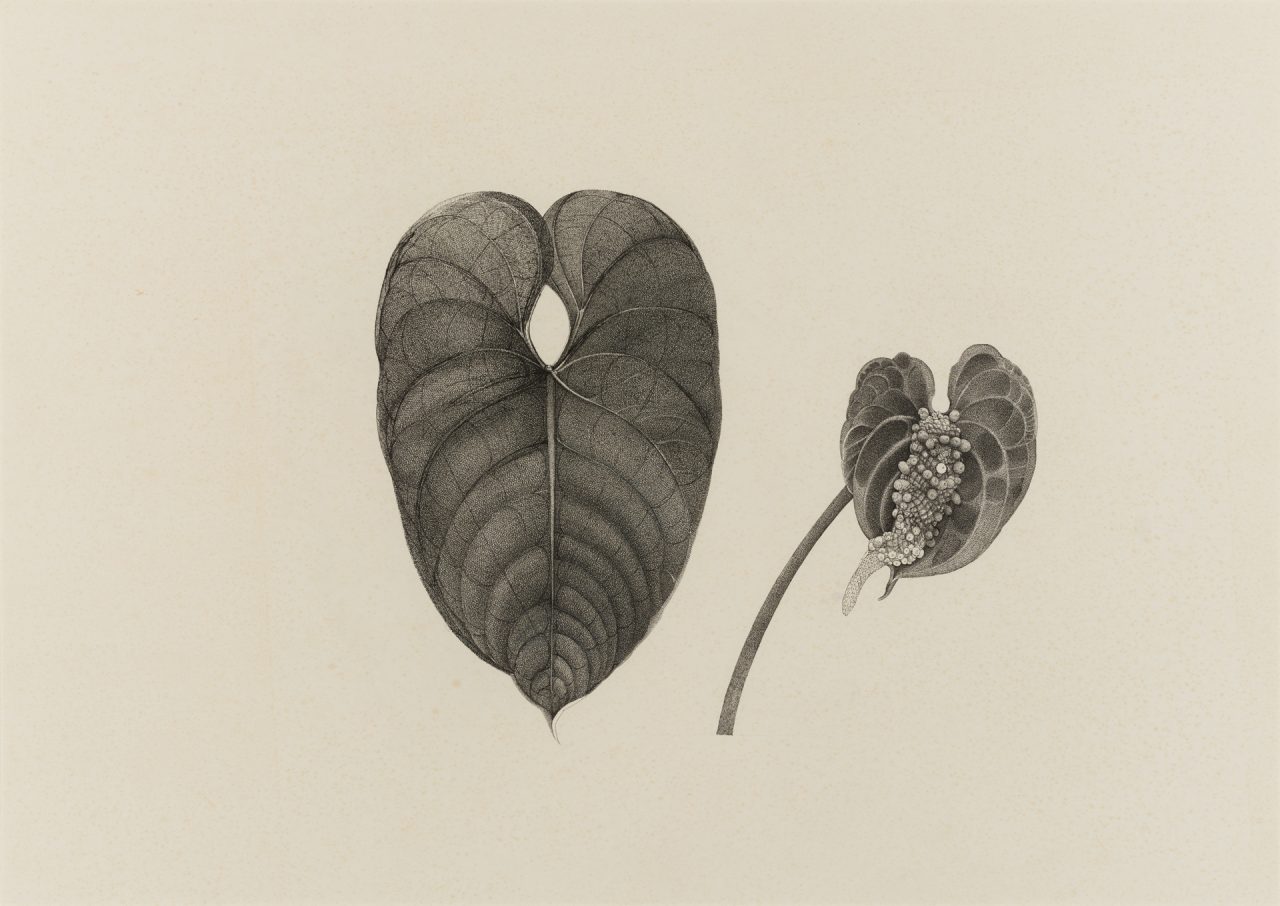
Please join Holly Schmidt, the Belkin's Outdoor Art program's artist-in-Residence, and Linda Jennings, Curator of the UBC Beaty Biodiversity Museum Herbarium, for a hands-on botanical drawing workshop inspired by the drawings of Charmian Johnson.
[more]